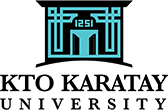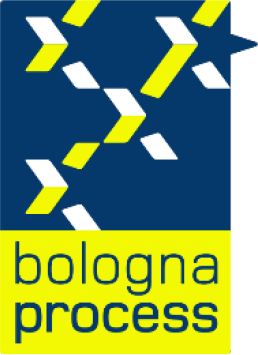Medical Imaging Techniques
Course Details

KTO KARATAY UNIVERSITY
Vocational School of Medical Services
Programme of Medical Imaging Techniques
Course Details
Vocational School of Medical Services
Programme of Medical Imaging Techniques
Course Details

| Course Code | Course Name | Year | Period | Semester | T+A+L | Credit | ECTS |
|---|---|---|---|---|---|---|---|
| 02921012 | Basic Computer | 1 | Spring | 2 | 2+0+0 | 3 | 3 |
| Course Type | Elective |
| Course Cycle | Associate (Short Cycle) (TQF-HE: Level 5 / QF-EHEA: Short Cycle / EQF-LLL: Level 5) |
| Course Language | Turkish |
| Methods and Techniques | - |
| Mode of Delivery | Face to Face |
| Prerequisites | - |
| Coordinator | - |
| Instructor(s) | - |
| Instructor Assistant(s) | - |
Course Content
History of science, science and nature of science, scientific literacy, technology literacy and design, science-technology and social change, science-technology and society, computers and communication
Objectives of the Course
Understanding the basic concepts and terminology of information technology, Solving problems using technology, Identifying and using changing sources of information Discussing the past and future of information technology
Contribution of the Course to Field Teaching
| Basic Vocational Courses | |
| Specialization / Field Courses | |
| Support Courses | |
| Transferable Skills Courses | |
| Humanities, Communication and Management Skills Courses |
Relationships between Course Learning Outcomes and Program Outcomes
| Relationship Levels | ||||
| Lowest | Low | Medium | High | Highest |
| 1 | 2 | 3 | 4 | 5 |
| # | Program Learning Outcomes | Level |
|---|---|---|
| P | 4 | |
| P | 3 |
Weekly Detailed Course Contents
| Week | Topics |
|---|---|
| 1 | Recognizing the basic concepts of Information Technology |
| 2 | History of Science and Technology |
| 3 | Use of Technology and Lifestyle in Various Societies Throughout Human History |
| 4 | Understanding Technology |
| 5 | New literacy concepts - Digital literacy - Media literacy - Technology literacy 1 |
| 6 | New literacy concepts - Digital literacy - Media literacy - Technology literacy 2 |
| 8 | Technology usage issues |
| 9 | Technology addiction |
| 10 | Conscious use of the internet and social media |
| 11 | The effects of social media on individuals |
| 12 | Personal and corporate data security management; IT legislation and law. |
| 13 | Basic concepts of cyber space and cyber security; cyber actors and attack methods, cyber defense methods. |
Textbook or Material
| Resources | Discoverers of the Future. trans. Duygu Dalkıran, Domingo Publishing House. Great Technological Transformation. trans. Ümit Şensoy, Turkish Airlines Publications. The Storyteller's Secret. Çepni, S., Ayvacı, H.S. and Bacanak, A. (2009), Science-Technology-Social Change, Celepler Printing, Trabzon. |
Evaluation Method and Passing Criteria
| In-Term Studies | Quantity | Percentage |
|---|---|---|
| Attendance | - | - |
| Laboratory | - | - |
| Practice | - | - |
| Field Study | - | - |
| Course Specific Internship (If Any) | - | - |
| Homework | - | - |
| Presentation | - | - |
| Projects | - | - |
| Seminar | - | - |
| Quiz | - | - |
| Listening | - | - |
| Midterms | 1 | 40 (%) |
| Final Exam | 1 | 60 (%) |
| Total | 100 (%) | |
ECTS / Working Load Table
| Quantity | Duration | Total Work Load | |
|---|---|---|---|
| Course Week Number and Time | 14 | 2 | 28 |
| Out-of-Class Study Time (Pre-study, Library, Reinforcement) | 14 | 2 | 28 |
| Midterms | 1 | 14 | 14 |
| Quiz | 0 | 0 | 0 |
| Homework | 0 | 0 | 0 |
| Practice | 0 | 0 | 0 |
| Laboratory | 0 | 0 | 0 |
| Project | 0 | 0 | 0 |
| Workshop | 0 | 0 | 0 |
| Presentation/Seminar Preparation | 0 | 0 | 0 |
| Fieldwork | 0 | 0 | 0 |
| Final Exam | 1 | 20 | 20 |
| Other | 0 | 0 | 0 |
| Total Work Load: | 90 | ||
| Total Work Load / 30 | 3 | ||
| Course ECTS Credits: | 3 | ||
